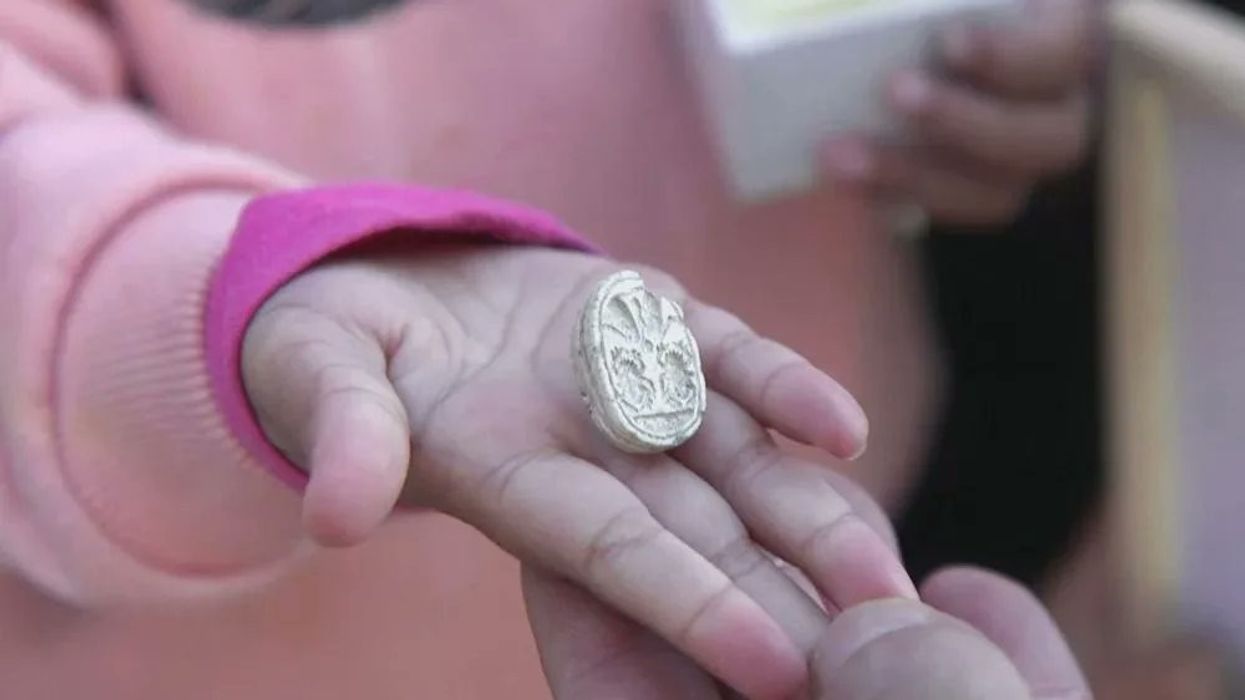Ziv Nitzan is your typical three-year-old who runs around and picks up rocks during nature walks with her parents. It’s not unheard of for a toddler to just pick up random rocks, sticks, and such, and then maybe take them home much to their parents’ chagrin. However, on February 8, 2025 during a family trip to Tel Azekah, Ziv picked up a rock that looked a little funny and showed it to her mother. That little rock turned out to be an ancient Egyptian amulet.
After her mother sent the amulet to be analyzed, Daphna Ben-Tor, curator for Egyptian archaeology at the Israel Museum in Jerusalem, found the amulet to be a genuine artifact. Upon further study, the Israel Antiquities Authority concluded that the little girl found a 3,800-year-old scarab amulet from the Middle Bronze Age, a period from 2100–1600 B.C.E. Scarabs were symbols of manifestation, existence, and growth within ancient Egypt.
“Scarabs were used in this period as seals and as amulets,” said Ben-Tor. “They were found in graves, in public buildings, and in private homes. Sometimes they bear symbols and messages that reflect religious beliefs or status.”
Tel Azekah, where Ziv found the amulet, is a small hill 40 miles south of Tel Aviv that is rich with history. During the period of the amulet’s origin, it was a fortified city until the Late Bronze Age when it was destroyed. It is also in biblical text, referred to as an area near the battle between David and Goliath.
“There are thousands of stones over there and it was upside down, but somehow out of all those stones, she picked this one,” said Sivan Nitzan, Ziv’s mother.
This isn’t the first time a historical artifact or discovery has been randomly found by a child. In 1940, a teenage boy and his friends in Lascaux, France stumbled upon 600 drawn animal cave paintings and 1,500 engravings from the Upper Paleolithic period after chasing his dog into a narrow cavern. Four of the paintings were of aurochs, a long-extinct wild ox within Europe.
- YouTubeyoutu.be
In 2014, a 10-year-old in New Jersey was playing on the beach near Beach Haven when he found an arrowhead. After further analysis, it turned out that the arrowhead was a 10,000-year-old artifact from an Indigenous tribe. That makes the arrowhead old enough to not only be used to spear fish, but to hunt now-extinct mastodons, too.
In 2020, a seventh grader saw something when foraging for mushrooms with his father, siblings, and cousins. It was a white slab protruding from the ground. After digging it out, it turned out to be a 1,500-year-old Greek burial inscription dating back to the Byzantine period.
This goes to show that if your kid is the curious sort, encourage them to just look around. Let them pick up the stick, dig through the rocks nearby, and play in the mud for a bit. Sure, they’ll get themselves and their clothes dirty, but that’s what showers and laundry machines are for. You never know, they might be responsible for the next historic archeological discovery.

















 Discovering little treasures at the thrift shop.Representative photo by Canva
Discovering little treasures at the thrift shop.Representative photo by Canva Free cash.Representative photo by Canva
Free cash.Representative photo by Canva Image Source: TikTok|
Image Source: TikTok| Image Source: TikTok|
Image Source: TikTok|





 Lonely dog waits for owner.
Lonely dog waits for owner.  Commenters were in supportImage via Reddit
Commenters were in supportImage via Reddit Commenters on Reddit.Image via Reddit
Commenters on Reddit.Image via Reddit Dogs can detect with something new is going on.Canva
Dogs can detect with something new is going on.Canva
 A pair of scissors.
A pair of scissors. A can opener opening a tin can.
A can opener opening a tin can. Jimi Hendrix playing on stage.Public Domain
Jimi Hendrix playing on stage.Public Domain A man handing over $20 in cash.
A man handing over $20 in cash. A person using a power saw.
A person using a power saw.